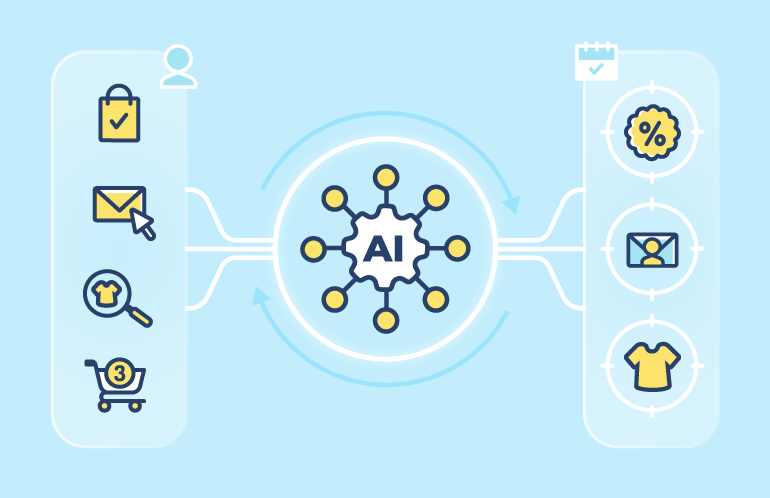Predictive CDP: the future of marketing personalization


Category: AI for CRM
In an age when consumers are inundated with a profusion of information and advertising, personalization has become an essential weapon for companies aspiring to stand out from the crowd and forge lasting customer experiences. It is in this dynamic landscape that Customer Data Platforms have emerged as powerful tools, refining the collection, analysis and exploitation of customer data. In this ever-evolving context, the silhouette of predictive CDP is taking shape, such as the Predictive AI platform. Predictive AI platform, opening up new possibilities for sophisticated personalization and prediction of consumer behavior.
Before going into the details of predictive CDP, it is essential to understand what a Customer Data Platform (CDP) is. A CDP is a technology platform designed to gather, centralize and organize real-time customer data from multiple sources such as online interactions, transactions, social networks, call centers and more. This disparate data is then transformed into unified customer profiles, giving marketers a complete, holistic view of each individual.
This is where predictive CDP comes in. Unlike traditional CDP, which focuses on historical data, predictive CDP integrates artificial intelligence and machine learning algorithms to anticipate future customer behavior and improve the customer experience. Using advanced statistical models, this technology analyzes past data to identify patterns and trends, then applies them to predict future customer actions with greater accuracy.
But what does a predictive CDP actually do?
Predictive CDP plays a key role in improving email sales campaigns. Let's imagine an e-commerce company wishing to optimize its email communications. Rather than sending standard promotional emails to everyone, a predictive CDP offers advanced personalization. It analyzes past purchases, recently consulted products, email interactions, online searches and market trends. This analysis enables CDP to accurately predict the products likely to be of interest to each customer. For example, if a customer has purchased children's clothing and shown an interest in strollers, CDP will probably predict their interest in discounts on children's toys. The company can then create tailor-made emails, presenting these specific offers and prompting the customer to act, while offering a better experience, boosting customer satisfaction.
Integrating these purchase predictions into email campaigns improves message relevance, boosts open rates and clicks, and boosts sales.
Shopping cart abandonment is a major challenge for many e-tailers. Here, predictive CDP can play a crucial role. Rather than simply sending generic reminders, it can analyze past shopping habits, current browsing patterns, interactions with promotions, and even external factors such as economics. By combining this information, CDP can identify impending cart abandonment signals with greater accuracy and trigger personalized incentives, such as special discounts or bundled offers, to encourage customers to finalize their purchases.
Personalization isn't just limited to online interactions. Companies with physical stores can also benefit from predictive CDP. By integrating online and offline data, a retail company could anticipate a customer's preferences when they enter a store. If a customer has shown an interest in specific products online, predictive CDP could signal in-store staff to highlight these products and even offer targeted discounts to encourage purchase.
The adoption of predictive CDP offers several significant advantages to companies:
While classic CDP has already played an essential role in centralizing and organizing customer data, predictive CDP goes much further by introducing the ability to predict future consumer behavior.
The impact of this technology doesn't stop there, however: when integrated within Customer Relationship Management (CRM), predictive CDP becomes a powerful catalyst for improving customer retention, building long-termcustomer loyalty , and maximizing lifetime value. CRM, traditionally focused on managing past and present interactions, is now evolving towards proactive management, guided by intelligent predictions. This means that companies can anticipate their customers' needs, solve potential problems before they arise, and offer relevant products or services at the right time. Simply put, predictive CDP redefines the way companies interact with their customers, opening up new opportunities for sophisticated personalization and prediction of consumer behavior.